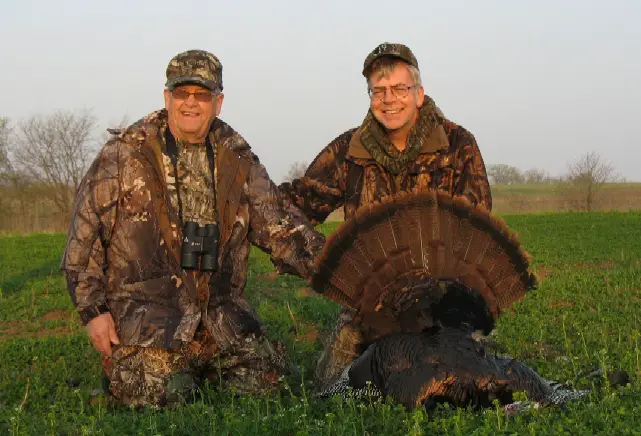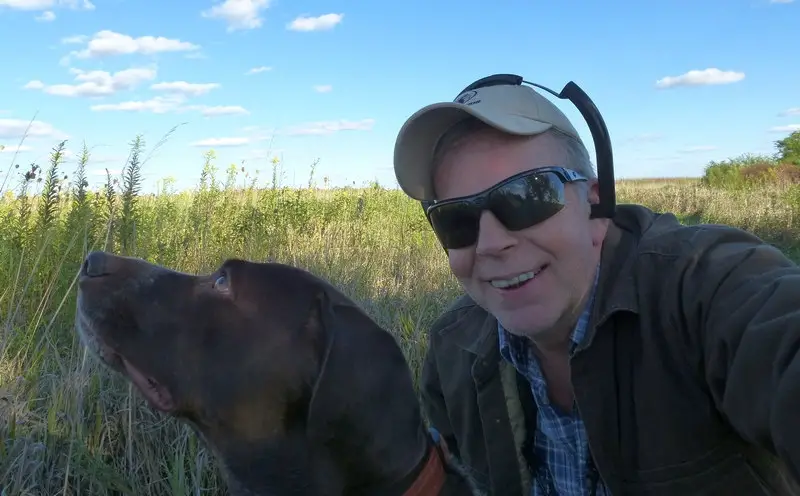The Renaissance of the Twenty Gauge Shotgun

Buddy's Very First Pheasant . . . with the help of a 20 Gauge. (Browning Silver Hunter.)
In a fairly lengthy conversation with the President of a major player in the shotgun market, consumer interest in new twenty gauge shotguns was gauged at far higher levels than 12 gauge interest, by a 5:1 ratio. Does this surprise you? Well, it certainly surprised me, not that there is newfound interest in 20 gauge models, but that it was that high. There are good reasons for this. One is the relative scarcity of 20 gauge models themselves. Those that were waiting for a 20 gauge Maxus or Vinci for the last eight or nine years are still waiting. Browning ignored the 20 gauge with their new A5 attempt. While Mossberg imports the quite competent SA-20, their popular 930 series has yet to make it to 20 gauge. Several of the best of the more recent autoloaders, the Fabarm L4S, the Remington V3, and the Retay Arms Masai Mara are not yet available in 20 gauge, either.
No one so much as makes a 20 gauge autoloader in the United States except for Remington, and their most recent model is the 11-87 that was announced over three decades ago. At one time, the 20 gauge was used to introduce a new model of shotgun, as in the Winchester Model 12 or the 20 gauges were released at about the same time as 12 gauges: Remington 11-48, Remington 1100, Beretta 302 / 303, and so forth. Today, sometimes 20 gauge versions aren't released at all. The appeal of the 20 gauge, particularly for hunting applications, is something I've covered before: http://www.randywakeman.com/WouldntYouReallyRatherDrivea20Gauge.htm .

The goose carries like a goose, the 20 carries like a 20, as they both are. (Browning BPS.)
While many 12 gauges struggle and strain to get below the 7 pound mark, any number of 20 gauges are already there without the prominent use of plastic, techno-polymers, or fake wood. Any number of the twenty gauges that I use most often (B-80, A303, A-5 20 Mag) and several reviewed twenty gauges (Browning Silver and Browning Cynergy) all get under 6-1/2 pounds quite easily and they are far from alone. Yet, they do it without plastic stocks, ribs, fake wood, and both the Cynergy and A-5 manage it with steel receivers as well.
Particularly with autoloaders, there seems to be a peculiar fascination with how ridiculously light of a shotshell is used that will still cycle the action. Though the antiquated blackpowder designation of “3 dram, 1-1/8 oz.” has long been considered the standard twelve gauge trap and field load, apparently a lot of folks want their twelve gauges to work with 7/8 oz. and even 3/4 oz.-- the common 28 gauge load. If that sounds a bit odd to you, well good-- because it has always sounded a bit odd to me as well. We sometimes struggle and cuss at 12 gauges when they get a bit balky with 1 oz. or 7/8 oz. loads, yet we would have far less to carp about if we used shotguns better equipped for those loads in the first place, meaning 20 gauges.
Sometimes we tend to go on a bit about the notion of a slender forearm being desirable or preferable. Perhaps it is, but again the 20 gauge often starts where 12 gauges can only aspire to go. It is the same way with some clays sports.
Skeet shooting is a good example, as the shots rarely exceed 22 yards or so, the average shot being about 15 yards. A 7/8 oz. load of #9 shot is about 506 pellets. If the clay bird fails to break with over 500 pellets thrown at it at 15 yards, chances are it really isn't the gun's fault. For upland hunting the differences between gauges grow smaller every year.
That is, of course, if you pattern your gun and use quality choke tubes and ammo. The cheapest stuff that goes bang and OEM choke tubes are highly unlikely to give you the best performance, or even adequate performance. Far from any tangible real-world disadvantage in exterior or wounding ballistics, the upland hunter that does his homework holds a significant advantage over the one that does not. That is of course true regardless of the hole diameter in a shotgun's barrel, but what a 20 gauge is capable of with factory loads has changed quite a bit from fifty years ago.
There are several 20 gauge loads in 2018 that absolutely obliterate the old, common 12 gauge loads. What you can get out of a Federal TSS Heavyweight 20 gauge turkey load today was unthinkable out of a common lead 12 gauge load even a decade ago. There are several other examples, including the Winchester Longbeard 20 gauge load, and affordable no-tox options like Kent 1400 fps Bismuth loads that, while no equal of the better lead loads, make many steel loads look sad.
You've probably heard that hunting numbers are on a downward trend. That's true, to an extent, but consider where the numbers come from: hunting licenses and surveys. Preserve shooting is very popular, in fact there are over 25 bird hunting preserves within 90 miles of my house. Often, you don't need hunting licenses for preserve hunts, dog trials, pigeons, predator hunting, or feral hogs. For preserve hunts, whether released quail, pheasants, game-farm mallards, or dog trials and barnyard pigeon culling, a 12 gauge is not needed and often not wanted. On a busy dove field, the limit is the limit, and whether you limit out using a 20 gauge or a 12 gauge is trivia.

Tony Knight called in this gobbler for me and a shot from an A-5 Mag Twenty did the rest.
Despite the better shot materials and widespread availability of improved 20 gauge loads for everything from wild pheasants to turkey, the availability of new 20 gauges is severely currently lagging behind the usefulness and usage of the 20. The latest crop of 20 gauges is too often a lot like Pat Paulson used to say: “President Gerald Ford, but without the pizzazz.”
If you think that some manufacturers struggle every year to make their 12 gauges sound more and more like 20 gauges, it isn't your imagination. If you try to count up all the times “Light,” “Superlight,” and “Ultralight” have been used in marketing attempts for 12 gauges you'll quickly run out of fingers and toes.
Years ago, there was a discussion about who to book to host, MC, and perform at a moderately large convention. The consensus, at the time, was, “We want someone like Edgar Bergen. Just like Edgar Bergen. Yes, someone just like Edgar Bergen would be great.” While everyone agreed that they wanted someone “just like” Edgar Bergen, no one could come up with exactly who that was. Finally, someone said, “Good grief, why not book Edgar Bergen?” And so, that's exactly what they did.

Perhaps,
rather than being offered shotguns that are supposed to carry like a
20, weigh like a 20, are slim like a 20, and shoulder like a 20, we
will actually get more of the Real McCoy? The twenty gauge is avian-tested, canine approved.
Copyright 2018 by Randy Wakeman. All Rights Reserved.












